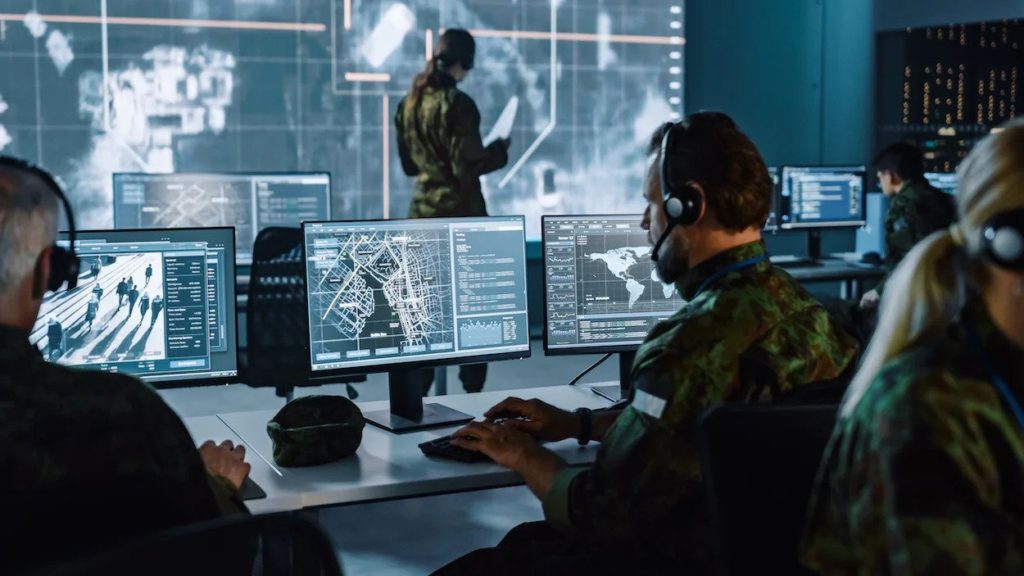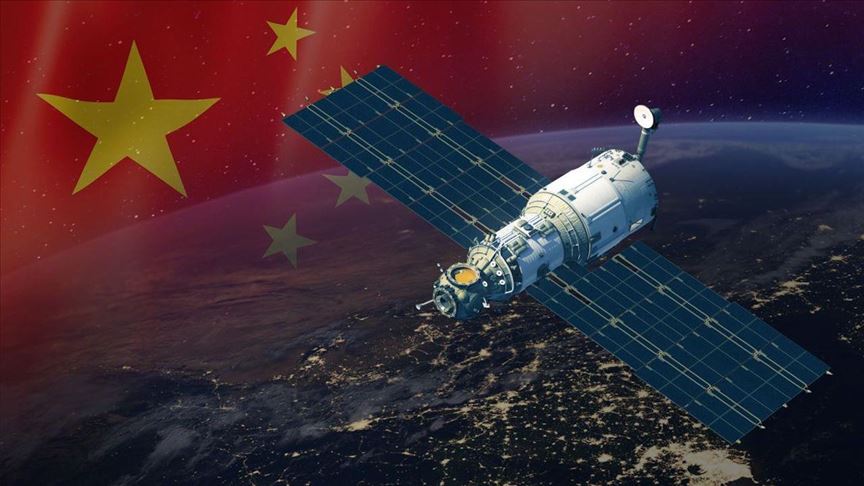The Chinese have been leaning back and taking notes on the extraordinary U.S. technology at work in the Ukraine War

14 April 2022 (Brussels, Belgium) – Throughout history, wars have been won by forces turning new technologies to their advantage. The 1415 victory of English King Henry V over the French at the Battle of Agincourt came courtesy of his archers and their newly developed longbows, raining arrows over a range the French could not match.
The First World War, however, saw a breadth and scale of technological innovation of unprecedented impact. It was the first modern mechanized industrial war in which material resources and manufacturing capability were as consequential as the skill of the troops on the battlefield. Heavy artillery, machine guns, tanks, motorized transport vehicles, high explosives, chemical weapons, airplanes, field radios and telephones, aerial reconnaissance cameras, and rapidly advancing medical technology and science were just a few of the areas that reshaped twentieth century warfare.
The war in Ukraine is seeing another historic first, with technology cutting through the fog of war. As I have noted in previous posts, drones, phones and satellite technology have tracked Russian military convoys, tracked the assembly of Russian military infantry and missile positions, intercepted Russian radio communications and mobile phone conversations, and much, much more. In Part 2 of my series Technology and War I will detail these advances.
Most of this is through Western governments’ sophisticated satellite and other surveillance assets, but commercial satellite imagery of the Ukraine conflict is helping a growing army of open-source intelligence analysts offer near real time assessments of battleground developments – illuminating for the public what was previously the domain of spy agencies. Governments are no longer the only place to go for high precision satellite data. Thanks to the explosive growth of the private satellite industry, the volume of imagery is greater and turnaround time faster compared to prior conflicts, such as Russia’s 2014 annexation of Crimea.
And, as we have learned over the last two weeks, these images have exposed the truth about Russia’s war in Ukraine in near real-time, exposing the aggressors’ lies and accelerating efforts to provide compelling evidence of Russian war crimes, convincing Western leaders to ramp up sanctions on Russia and accelerate weapons supplies for Ukraine.
How all of this will affect the final outcome of the war is very unclear. But what is very evident is China is keeping a watchful eye on the technology. There is much that can be said about China’s tacit approval of Russia. And that tacit approval was obvious from the start of the invasion if you saw/read the the pattern of media and official pronouncements from Beijing, with China refusing to criticize Russia and largely parroting its narrative of a limited “military operation” made necessary by the U.S.-led alliance’s unrelenting push eastward.
At its heart, the deepening of ties with Russia (if that happens) will be guided by cautious self-interest, as China exploits the war in Ukraine to hasten what it sees as America’s inevitable decline. The focus at all times is its own dream of establishing an alternative to the Western, liberal world order.
Or last month when many tech companies sided with Ukraine over Russia’s invasion, China-controlled TikTok appeared to follow suit by suspending new video uploads and live streams from Russia. But what TikTok actually did was to wall off Russian users from seeing any posts at all from outside the country, including from Ukraine – effectively creating a second, censored version of its platform just for Russia. For the tens of millions of Russians on TikTok, the outside world has fallen silent. TikTok’s block on outside content appears to have effectively purged the app of non-Russian content. But its block on Russian content has proved porous, letting pro-Russian government propaganda slip through.
But the China geopolitical angle is outside the remit of this post. It needs a more nuanced treatment, because caveats must be applied to all such observations. And that’s because what I have learned as an arm-chair historian (although I have been to the killing fields of Yugoslavia, and for this series I have been to both Poland and Ukraine) our Western orientation often means we project our own thoughts and preferences onto those we don’t understand. Noting that danger, we should at least attempt to divine what lessons Mr Xi might take from Ukraine – from all angles. Because in appreciating where the Chinese may learn and adapt, we also inform our national security strategies and military modernisation programs. Bu that requires a deeper post.
China in space

As I noted last year in a long post, China has some very sophisticated surveillance and remote-sensing satellites in space. They offer super-wide coverage and resolution at the sub-meter level, and are capable of high-speed data storage and transmission. And China has also developed some technologies that could protect satellites from attack by high-power microwave weapons.
NOTE: high-power microwave weapons can disable electronic equipment. Using an antenna to transmit an intense energy beam at a target in orbit, such as a satellite, they can generate an electrical surge strong enough to take it out of action.
All of this came front and center this week at a NATO briefing here in Brussels about the U.S. Defense Intelligence Agency space security report that shows how China has become increasingly reliant on space to prevail in a major conflict with the United States and is aggressively launching, acquiring, and obtaining through espionage the counter-space capabilities necessary to do so. Said the event leader:
“The Chinese are leaning back and taking notes on the Ukraine War. We know through intelligence leaks that the Chinese knew a lot about our capabilities. But apparently they are in awe of what they are seeing”.
In the report (80+ pages, a very heavy slog) the DIA updates the gains in satellite operations and human spaceflight that China and Russia, and to a lesser extent North Korea and Iran, have made over the past year. As China’s and Russia’s space and counterspace capabilities increase, both nations are integrating space scenarios into their military exercises. But the report makes clear that China’s activities are most worrisome to the United States, not only because of the country’s rapid growth in space – doubling the number of ISR satellites it has in space to 250 since 2018 – but also its rapid acquisition and pursuit of counter-space capabilities. China is rapidly modernizing through both “overt and covert” acquisition of foreign space and counter-space technologies, the DIA found. China uses traditional technical espionage and cyber espionage techniques as well as its open-source collection network, technology transfer organizations, and exploitation of overseas scholars:
“China is probably sees counterspace operations as a means to deter and counter a U.S. intervention during a regional military conflict. China has claimed that ‘destroying or capturing satellites and other sensors’ would make it difficult for the U.S. and allied militaries to use precision-guided weapons.”
The DIA also found that China “probably is developing jammers dedicated to targeting SAR, including aboard military reconnaissance platforms,” referring to the advanced synthetic aperture radar systems that allow clear imagery even at night or during bad weather. Those jammers would be key to preventing the U.S. and U.S.-affiliated commercial satellite firms from maintaining a clear picture over Taiwan, as they have in Ukraine:
“Interfering with SAR satellites very likely protects terrestrial assets by denying imagery and targeting in any potential conflict involving the United States or its allies. China’s jammer advancements also likely include the capability to interfere with satellite communications over a range of frequency bands, including military-protected extremely high frequency communications.”
In the seven weeks since the Ukraine War began, while Russia has conducted counter-space operations against Ukraine – including jamming – it has also had its own lines of communication severed, leaving Russian ground units without direction or logistical support. Many of its precision-guided munitions have failed, forcing Russian aircraft to rely on dumb bombs. By late March, when Russia was launching 300 sorties a day, at least 20 percent – and possibly as many as 60 percent – of its air-launched missiles were malfunctioning, forcing aircraft to return to base with the munitions still attached to their wings.
Ukraine has been able to persist and resist in part because of commercial satellite firms that provided Ukraine the ability to push back on Russia’s electronic warfare and disinformation campaigns. That’s something China is watching closely, and will likely not be as big of an advantage in a fight for Taiwan.
NOTE: in Part 2 of my series Technology and War I will detail how a private company, HawkEye 360, has helped isolate the location of Russian jammers by providing continuous monitoring of reports of interference.
The proliferation of satellites is changing the way that we fight and the way that the world is able to see the fight, to be able to see what’s happening on the battlefield. It changes that deterrence calculus. It changes the way countries like China might be thinking about Taiwan. And I think the U.S. just might realise it has to start adjusting.
Because in a potential conflict over Taiwan, or in the South China Sea, there will not be the advantage of both U.S. military and commercial satellite firms agreeing to protect and not reveal information to the public on Ukrainian military operations. Instead, the U.S. and partner forces would likely be publicly tracked through satellite-enabled social media supporting China. In a potential China fight, there would be a lot less people on our side, on the West, on the side of democracies in a China fight. And capabilities are going to continue to improve. And so some of our aviation forces are going to be at risk.